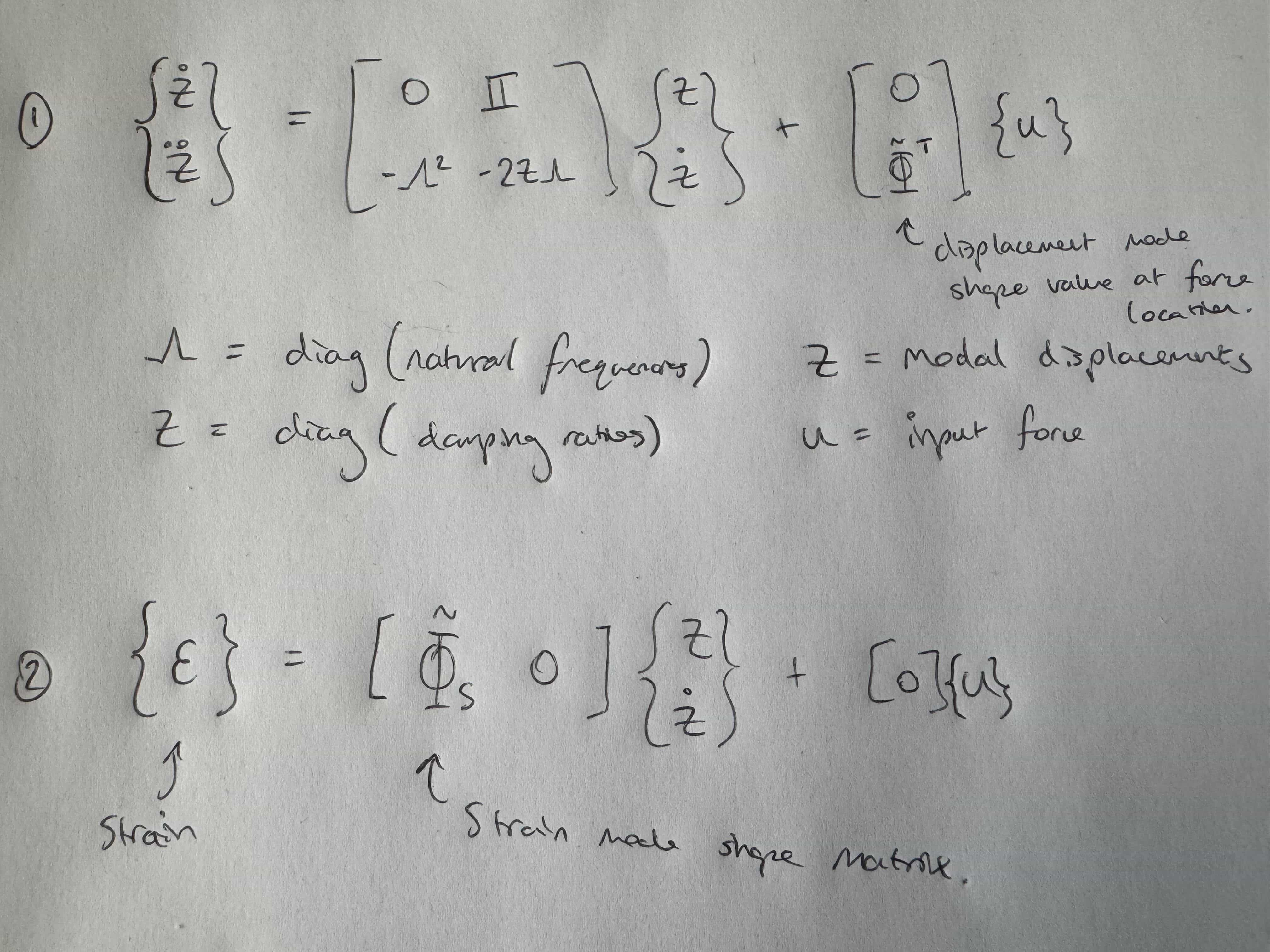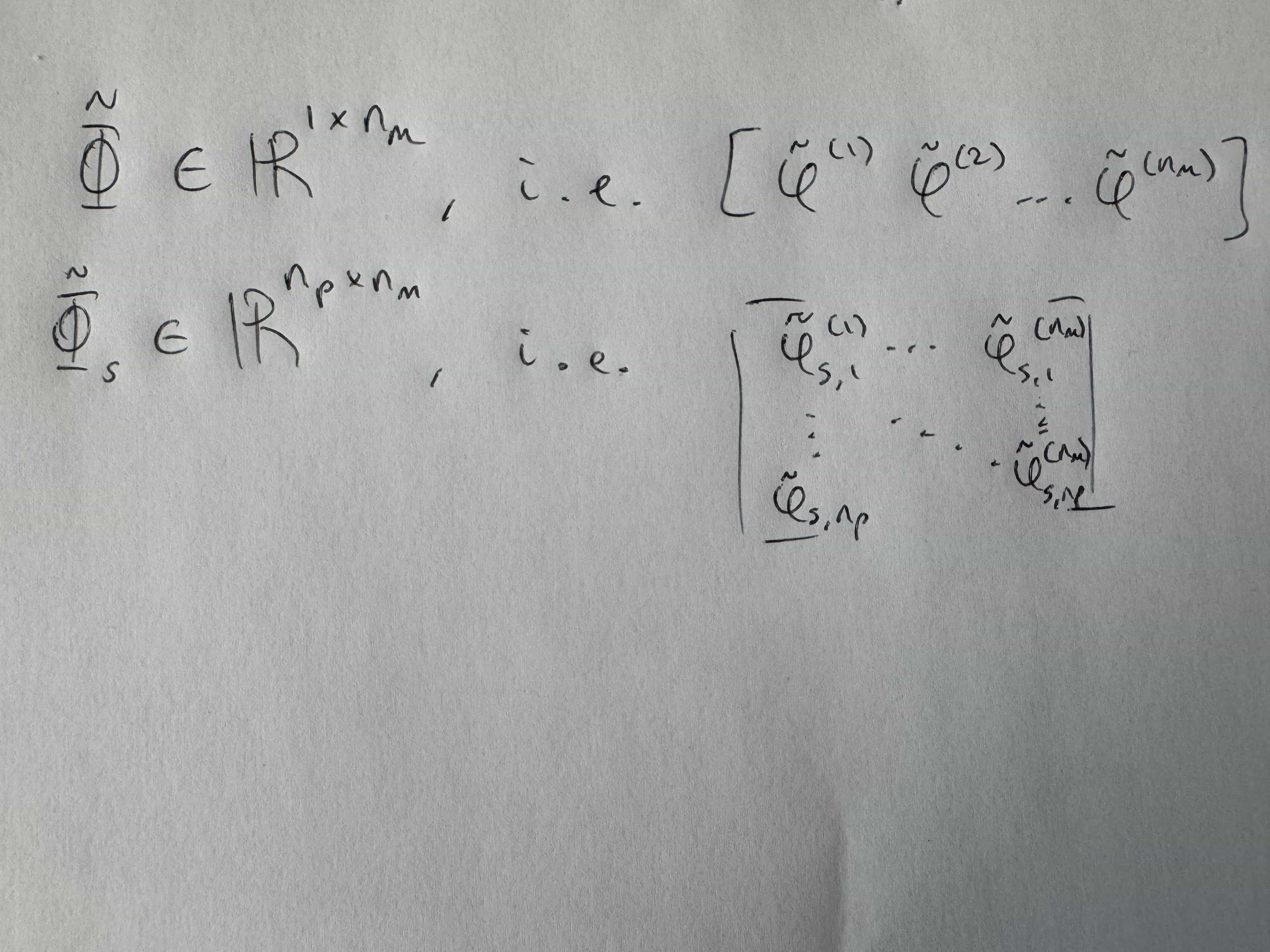-
-
May 19, 2025 at 5:29 pm
dgoodman1
SubscriberHi,
I'm trying to create a reduced order modal state space model of a cantilever beam (see image links below), using displacement and strain mode shape values coming from Ansys Modal, and I'm comparing the results of the state space model to an MSUP transient analysis.
The way this was done was to firstly run Modal to get results for the 10 modes, then the Y displacement value at the force location and the X normal strain at the 8 "sensor" locations were evaluated to form a displacement mode shape value and strain mode shape vector for each of the modes. From my understanding, if the modes in the transient structural MSUP are truncated so that the same modes and damping values are used, I should be getting similar answers for strain at the 8 points between the FE and the reduced order model.
The issue is that the results are very different when the disp mode shape vector and strain mode shape matrix described above are usedin the reduced order model. I have heard in previous questions that the strain values used in modal will be mass normalised as they are related to the mass normalised displacement values. This would make me think that the relationship between modal displacements (lowercase z) and strain (epsilon) shown in the state space model is true. As it is, clearly there's something wrong with the scaling, or my understanding of how the transient structural MSUP method gives strain is incorrect. Does anyone have experience creating models of this form using mode shape values gained from modal?
Editted to include images:

-
May 20, 2025 at 6:47 am
Erik Kostson
Ansys EmployeeHi
So other forum members and Ansys colleagues can help, it is better to attach images inline in your post (not as links/downloads).
All the best
Erik
-
- You must be logged in to reply to this topic.



-
3492
-
1057
-
1051
-
965
-
942

© 2025 Copyright ANSYS, Inc. All rights reserved.









